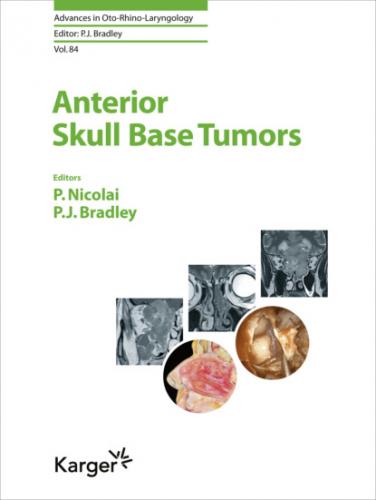Ancillary markers for diagnosis include keratin, synaptophysin, and other neuroendocrine and muscle markers (Table 2). Amplification of c-Myc oncogene and loss of chromosome 1p have been considered poor prognostic markers.
Differential Diagnosis
Tumours to be differentiated from olfactory neuroblastoma include lymphoma, melanoma, small round cell (Ewing’s sarcoma/PNET) tumour, rhabdomyosarcoma, and adenoid cystic carcinoma (solid form). Immunohistochemical profiles including a spectrum of different cell lineages are crucial for diagnosis. The comparative characteristics of these tumours with other primitive sinonasal tumours are presented in Table 5.
Ewing Sarcoma/PNET
Ewing sarcoma and PNET are interrelated primitive round cell malignancies of neuron-ectodermal derivation [115–117]. They represent a spectrum of morphologic entities that share common molecular genetic features. These tumours rarely involve the skull base, mainly as a secondary extension from sinonasal localisations, and typically occur in childhood and young adults. The maxillary sinus and the nasal fossa are the most commonly affected sites. Grossly, tumours present as light-tan, soft, and fleshy tissues with haemorrhage and mucosal ulceration.
Table 5. Immunomarkers in the differentiation of small round cell tumours
Histologically, the tumour presents in sheet and nests of densely uniform small cell proliferation. CD99 (MIC2) is commonly used and generally positive. PCR-based methods to detect the EWS/FLI gene fusion transcript and in situ hybridisation of chromosomes t(11;22) or t(21;22) is helpful in confirming the diagnosis (Table 5).
Differential Diagnosis
The differential diagnosis includes all small round cell tumours, lymphoma, melanoma, rhabdomyosarcoma, small cell carcinoma, and pituitary adenoma. A combined panel of cytomorphologic and immunohistochemical markers is sufficient to establish the diagnosis.
Paraganglioma
Sinonasal and skull base paragangliomas are extremely rare. They are likely to be derived from dispersed neuroendocrine cells within the sinonasal mucosal covering. Tumours at this location may behave in an aggressive fashion. All paragangliomas are considered malignant in the new WHO classification.
The histologic characteristics of these lesions are typical of those in traditional sites with classical Zellballen organisation and granular cytoplasm [118–120]. Immunohistochemically, cells comprising these tumours are positive for neuroendocrine markers and negative for keratin. A helpful feature is the positivity for S-100 protein in sustentacular cells bordering the Zellballen.
Mucosal Melanoma
Primary melanoma in the sinonasal tract accounts for less than 1% of all melanomas [121–123]. They afflict patients in their 5th and 6th decades of life with equal gender distribution. The most frequently affected site is the lateral nasal wall, followed by the nasal septum, the maxillary antrum, and ethmoid. Symptoms are nasal obstruction and epistaxis, and the lesion presents as a polypoid nasal mass of a small to large size, with light-tan, brown, or black colourations. Histologically, the cytomorphologic features are comparable to those of melanoma of the skin: spindle, rounded, and epithelioid cells forming nests, sheets, and fascicles may be found [124–128]. These structures may contain melanin, but this is often absent. Mucosal involvement and epidermoid migration of melanocytic cells is a helpful diagnostic feature when present. Commonly, ancillary markers include HMB-45, Melan-A, MART-1, tyrosinase SOX10, and S-100.
Differential Diagnosis
Melanoma at these locations should be differentiated from metastatic melanoma and primary undifferentiated skull base neoplasms, including sinonasal undifferentiated carcinoma, neuroendocrine tumour, olfactory neuroblastoma, lymphoma, PNET, and rhabdomyosarcoma. Immunohistochemical markers are fundamental in differentiating these tumours (Table 2).
Hematolymphoid Tumours
Lymphomas
The majority of lymphomas involving the anterior skull base are NK/T cell, but B cell lymphoma can also affect this region. Patients typically present with nosebleeding, nasal obstruction, or proptosis. Histologically, the tumour is composed of uniform lymphoid proliferation diffusely infiltrating adjacent structures. The infiltrate is commonly angiocentric, especially in the NK/T subtype and may manifest necrosis. Diagnosis and classification are based on phenotyping using immunohistochemical markers for B and T cells.
Differential Diagnosis
Morphologically lymphoproliferative tumours mimic small round cell neoplasms, neuroblastoma, and melanoma. Lineage markers including epithelial, neural, melanolytic, and lymphoid markers are critical to the diagnosis [129–131].
Secondary Tumours (Metastasis)
Isolated metastatic localisations at the skull base are very rare. More frequently they can occur concomitantly at multiple sites of involvement. Renal cell carcinoma is by far the most common source. Other primary sites of origin can be breast, lung, skin (melanoma), and testis. Isolated reports of metastasis from various other tumours have also been reported.
Secondary tumours equally affect both genders notwithstanding gender-specific influence. In female patients, breast, gynaecologic, and thyroid tumours are the most frequent primary origins, while in males cancer of the lung, prostate, kidney, and bone in decreasing order are the most common sites [132, 133].
Disclosure Statement
The authors have no conflicts of interest to report for
